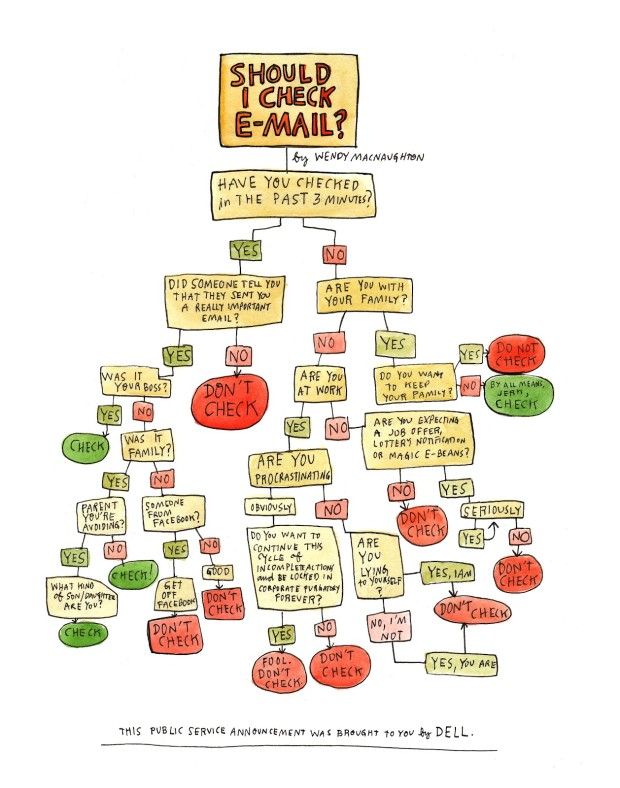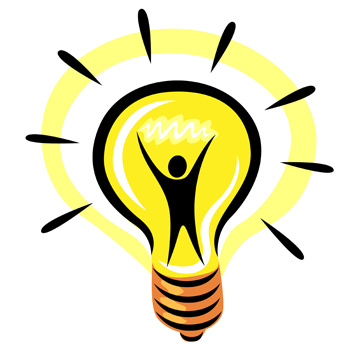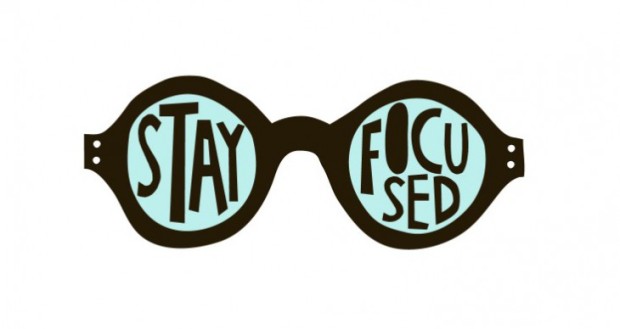Distraction is the Devil of Productivity

others check their email
or peruse through Facebook.
I found this amusing flow chart as I was searching for images for . . .
get this . . . distractions.
FOR THOSE OF YOU WHO HAVE A PROBLEM WITH CHECKING EMAIL, THIS FLOW CHART WILL SEEM ALL TOO FAMILIAR.
If you are having issues with distractions like I do, you need to bring an end to them or you’ll never finish your project. Distractions are like leashes. Why do we get distracted in the first place? And what impact do distractions have on our performance?
Leashes tell the world you aren’t free, that you’re following someone else’s lead, and that – worst of all – you’re okay with it! Sadly, we all wear leashes. Between emails, Facebook, phones, and a tangled web of other electronic villainies. Even if you have a clearly defined purpose, distractions lie around every corner, waiting to strike.
WHY ARE WE SO DISTRACTED?
When we don’t achieve our goals, it’s easy to blame outside distractions. Especially when we’re barraged with emails, tasks, social cravings, job musts, and an overwhelming abundance of other distractions. But the cold, hard truth is: you subconsciously give in to distractions because you want to feel in control of your life. By giving into distraction, we subconsciously assert our autonomy. According to the self-determination theory, autonomy is “the universal urge to be causal agents of one’s own life and act in harmony with one’s integrated self.”
Think about it. Let’s say you have a school project due. Tomorrow.
You know how important this is; however, you find yourself constantly distracted by
PUPPY PICTURES ONLINE,

THE LATEST TWITTER POST,

OR YOU’RE WANDERING AROUND IN A SNUGGIE.

This is your subconscious asserting your autonomy. In essence, you’re saying to yourself, “Hey, I don’t need to do my school project; I’m running around in my snuggie because that’s what I want to do!”
AND IT GETS WORSE.
We even assert our autonomy on tasks we’ve assigned ourselves, which is about as crazy – and effective – as flipping yourself off! But we do it anyway.
DOES DISTRACTION AFFECT PERFORMANCE? AND IF SO, HOW LONG DOES THE DISTRACTION HAVE TO BE?
A study published in the Journal of Experimental Psychology investigated these questions – and its findings were shocking. In the study, the subjects were asked to complete simple tasks on a computer. While they worked, an interruption would appear on their screen, and researchers logged how many mistakes people made once they returned to the task. The results were astounding. Researchers found that interruptions averaging 2.8 seconds doubled the number of mistakes. What’s even worse is disruptions averaging 4.4 seconds tripled them! A simple distraction lasting less than 5 minutes can triple the mistakes you make.
THERE IS A SOLUTION!

FIRST, YOU MUST FIGURE OUT WHAT DISTRACTS YOU.
Take a hard look at your day and identify the time waster that holds you back. Is it the phone? Is it checking your e-mail every 2 minutes? Are Social media sites like Facebook or Twitter always open? All of these things can pickpocket your time and keep you from achieving important goals. The best thing to do is to take a mental note of the distractions by what it is, the length of time you are distracted for, and how long it takes you to get back to the task at hand. Once you get an idea of your use of time, you can then do something about it. It’s hard to break habits cold turkey, like constantly checking email or Facebook, but doing it is essential to your success.
BUT …
the all work and no play routine always left me wondering: Shouldn’t there be moments in our days intended for distraction? Shouldn’t we be able to dedicate a few minutes here and there to the things that give us a rush of dopamine, while still getting our tasks done?
After much research, it turns out that if we schedule time for our favorite distraction, it can help us become more productive in the long run because we lose the urge to recklessly act on that time waster. This idea actually has a whole strategy dedicated to it: the Theory of Constraint. The theory states that once you identify your biggest distraction, you can schedule it as part of your day, making it crucial to your routine versus something that ruins your time management.
DID YOU LOSE 5 HOURS TO MINDLESS FACEBOOK SCROLLING YESTERDAY?
Start putting the Theory of Constraint into action by following the three-step process below. Remember, “a chain is only as strong as its weakest link” – let’s make our distractions our strengths.
1) IDENTIFY YOUR #1 DISTRACTION.
Take a hard look at your day and identify what it is that can waste your whole day and keep you from being productive. For me, it’s checking my email and making sure the inbox is clean. A co-worker of mine can get lost on the phone with her children while another colleague can’t resist reading a great blog post … or 15.
2) MAKE THIS TIME WASTER A PART OF YOUR DAY.
You schedule meetings, reminders, and time for creative tasks in your calendar. Why not schedule 15 minutes to grab coffee with a friend, read blog posts, or check social media?
According to Ron Friedman, if we direct all of our energy on work without giving ourselves a chance to rest, we become vulnerable to more distractions because we become burned out. But by making the time waster a part of our day, we can give ourselves a break while still staying on schedule.
3) SCHEDULE EVERYTHING ELSE.
After you’ve identified your weak point and set aside time for that distraction, schedule the rest of the day. Each block on your calendar should be allocated to one task and one task only.
Why do we need to schedule our tasks? According to Buffer, having a clear schedule in place improves productivity. Including the distraction as a part of your day-to-day responsibilities will prevent you from losing sight of the task at hand and becoming, well, distracted. That’s the basis of the Theory of Constraint: Find what’s constraining you, and turn it on its head.
4) KNOW YOUR LIMITS AND TAKE BREAKS.
The key to being able to schedule things is to also know your limits. The Pomodoro Technique can help you power through distractions, hyper-focus, and get things done in short bursts, while taking frequent breaks to come up for air and relax. Best of all, it’s easy. If you have a busy job where you’re expected to produce, it’s a great way to get through your tasks.
The methodology is simple: When faced with any large task or series of tasks, break the work down into short, timed intervals (called “Pomodoros”) that are spaced out by short breaks. This trains your brain to focus for short periods and helps you stay on top of deadlines or constantly refilling inboxes. With time it can even help improve your attention span and concentration. Pomodoro is a cyclical system. You work in short sprints, which makes sure you’re consistently productive. You also get to take regular breaks that bolster your motivation and keep you creative.
HOW DOES THE POMODORO TECHNIQUE WORK?
The Pomodoro Technique is probably one of the simplest productivity methods to implement. All you’ll need is a timer. Beyond that, there are no special apps, books, or tools required. Here’s how to get started with Pomodoro, in five steps:
1) CHOOSE A TASK TO BE ACCOMPLISHED.
Something big, something small, something you’ve been putting off for a million years: it doesn’t matter. What matters is that it’s something that deserves your full, undivided attention.
2) SET THE POMODORO TO 25 MINUTES (THE POMODORO IS THE TIMER).
Make a small oath to yourself: I will spend 25 minutes on this task and I will not interrupt myself. You can do it! After all, it’s just 25 minutes.
3) WORK ON THE TASK UNTIL THE POMODORO RINGS, THEN PUT A CHECK ON YOUR SHEET OF PAPER.
Immerse yourself in the task for the next 25 minutes. If you suddenly realize you have something else you need to do, write the task down on a sheet of paper. Congratulations! You’ve spent an entire, interruption-less Pomodoro on a task.
4) TAKE A SHORT BREAK (5 MINUTES IS OK)
Breathe, meditate, grab a cup of Joe, go for a short walk or do something else relaxing (i.e., not work-related). Your brain will thank you later.
5) EVERY 4 POMODOROS TAKE A LONGER BREAK.
Once you’ve completed four Pomodoros, you can take a longer break. 20 minutes is good. Or 30. Your brain will use this time to assimilate new information and rest before the next round of Pomodoros.

Like you, I hope to one day be as productive as some of the people I admire most. And with this plan in mind, I think I will be – without giving up my favorite distraction. If you like to grab coffee with friends, keep doing it. If long lunches are your thing, by all means, take them. But just know that you have to give yourself a schedule (and put your distraction on it) to stay locked in.

